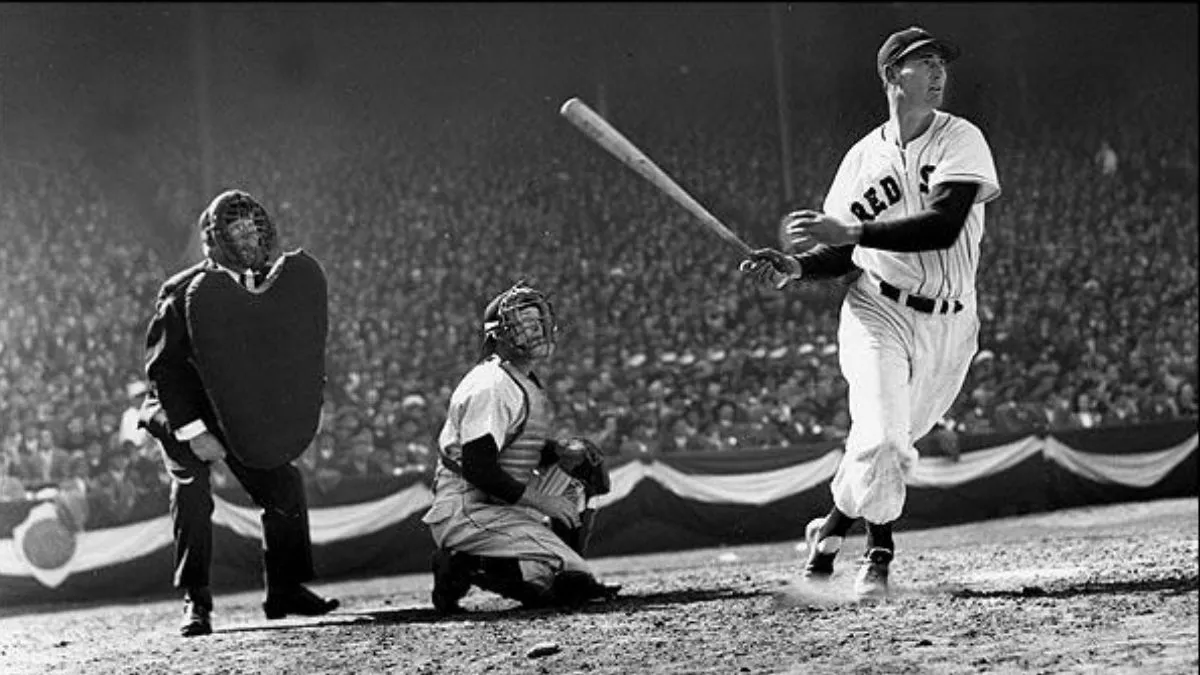Welcome to the captivating world of sports! From ancient times to the present day, sports have played an integral role in our lives. Whether we’re cheering on our favorite team or participating in a friendly game ourselves, there’s something about sports that brings out our competitive spirit and unites us as a global community.
In this blog post, we will take you on a journey through time as we explore the evolution of sports. We’ll delve into the origins of ancient sports, witness the rise of organized competitions, and uncover how modern-day sports have become not only a source of entertainment but also big business. So fasten your seatbelts and get ready for an exhilarating ride through history as we discover just how far sports have come!
Ancient Sports
Imagine traveling back in time to ancient civilizations like Greece and Rome, where sports were not just a form of entertainment but also deeply rooted in their cultural and religious practices. In these early societies, sports held immense significance and were often seen as a way to honor the gods.
Greek civilization gave birth to the Olympic Games, one of the most renowned sporting events in history. Held every four years in Olympia, this grand spectacle brought together athletes from various city-states to compete for glory. The games included events such as running, wrestling, chariot racing, and discus throwing.
Meanwhile, in ancient Rome, gladiatorial contests took center stage. These brutal battles pitted trained fighters against each other or wild animals for public amusement. While vastly different from modern-day sports in terms of ethics and rules, they reflected the fierce competitive spirit prevalent during those times.
Beyond Greece and Rome’s contributions to ancient sports history, many other cultures had their own unique sporting traditions. For example, Mayan ballgames incorporated elements of soccer with ritualistic aspects that symbolized cosmic battles between good and evil forces.
Sports played an integral role not only as physical activities but also as platforms for social interaction and community bonding. They served as arenas for individuals to showcase their strength, agility,and prowess while fostering camaraderie among spectators.
The legacy of ancient sports can still be felt today through modern iterations inspired by those early civilizations’ athletic endeavors. As we move forward on our journey through the evolution of sports let us now explore how organized competitions began to take shape!
The Rise of Organized Sports
In the early days, sports were often informal and unstructured. However, as societies became more organized, so did their approach to sports. This led to the rise of organized sports, where rules and regulations were established to ensure fair play and competition.
One of the earliest examples of organized sports can be traced back to ancient Greece with the Olympic Games. These games brought together athletes from different city-states for a series of competitions that tested their physical abilities. The Olympics not only showcased athletic excellence but also promoted unity among Greek communities.
Over time, other civilizations adopted similar practices and developed their own organized sporting events. In medieval Europe, various forms of combat such as jousting tournaments gained popularity among knights and nobility.
It wasn’t until the 19th century that modern organized sports began to take shape. The Industrial Revolution played a significant role in this transformation by providing people with more leisure time and creating opportunities for mass participation in sporting activities.
The establishment of formal organizations dedicated to specific sports further contributed to this rise. Sporting clubs and associations were formed, providing a platform for individuals with shared interests in particular sports to come together and compete against one another.
As these organizations grew in number and influence, they started organizing leagues and championships on regional, national, and eventually international levels. This gave rise to professionalization within certain sports disciplines as athletes began competing for titles and monetary rewards.
Organized sports have not only provided entertainment but have also fostered social integration by bringing people from diverse backgrounds together under a common passion. They have become an integral part of our culture worldwide—something we gather around as spectators or actively participate in ourselves.
Today’s mega-events like the FIFA World Cup or the Olympics draw millions of viewers globally while showcasing exceptional talent from across nations—truly highlighting how far we’ve come since those early days when sport was just an informal pastime.
Modern Sports
The world of sports has come a long way since its ancient origins. In today’s modern era, sports have evolved into a dynamic and global phenomenon. With advancements in technology, communication, and transportation, the world is more connected than ever before, allowing for the growth and popularity of various sports across different cultures.
One notable aspect of modern sports is the increase in professional leagues and competitions. From football to basketball, cricket to tennis, there are now numerous organized leagues that attract millions of fans worldwide. These leagues provide athletes with opportunities to showcase their skills on a grand stage while fostering healthy competition among teams.
Moreover, modern sports have become highly commercialized. Sponsorships from big brands and advertising deals generate significant revenue for both athletes and sporting organizations. The rise of television broadcasting also plays a crucial role in expanding the reach of these events beyond local audiences.
Technology has revolutionized how we experience sports as well. High-definition broadcasts allow us to witness every intricate detail of games from the comfort of our homes or even on mobile devices while on-the-go. Social media platforms enable fans to connect with their favorite athletes directly and share their enthusiasm with others around the globe.
Furthermore, inclusivity has become an important focus in modern sports. There are now greater efforts being made to ensure equal opportunities for participation regardless of gender or physical ability. This push towards inclusivity not only promotes diversity but also encourages more individuals to engage in physical activities and pursue careers in athletics.
In conclusion (not conclusive), modern sports have transformed into a multi-billion dollar industry that captivates people worldwide through its exhilarating competitions, technological innovations, commercial appeal,and emphasis on inclusion.
These developments continue shaping the future landscapeof sport as it maintains its status as oneof humanity’s most cherished pastimes!
The Business of Sports
Sports have evolved from being just a recreational activity to becoming a multi-billion dollar industry. The business of sports encompasses various aspects such as marketing, sponsorship, broadcasting rights, and merchandise sales. It has become an integral part of our society, capturing the attention of millions around the world.
One key aspect of the business of sports is marketing. Sports teams and organizations heavily rely on effective marketing strategies to build their brand and attract fans. From billboards to social media campaigns, these entities leave no stone unturned in promoting their products and events.
Sponsorship deals also play a significant role in the business side of sports. Companies recognize the immense popularity and reach that sports offer situstoto, leading them to invest heavily in sponsorships. Athletes themselves have become walking billboards for brands, endorsing products both on and off the field.
Broadcasting rights are another crucial element in this industry. Television networks pay hefty sums for exclusive rights to broadcast major sporting events live. This not only generates substantial revenue but also allows fans worldwide to enjoy their favorite games from the comfort of their homes.
Merchandise sales add yet another dimension to this thriving industry. Fans proudly wear jerseys or buy other team-related merchandise as a way to show support for their favorite players and teams while contributing financially towards sustaining the sport they love.
All these different facets come together harmoniously under one umbrella – The Business of Sports – transforming it into a global phenomenon with far-reaching effects on economies worldwide.
Globalization of Sports
Globalization has had a profound impact on the world of sports, transforming it from a local pastime to a truly global phenomenon. With advances in technology and communication, sports have become more accessible and widely followed across borders.
One of the key aspects of globalization in sports is the expansion of leagues and tournaments beyond their home countries. The English Premier League, for example, is now watched by millions around the world, with fans tuning in from every corner of the globe to witness their favorite teams battle it out on the pitch.
Not only has globalization increased viewership but also allowed for greater diversity within teams. Athletes from different countries and cultures now come together to compete side by side, showcasing their unique skills and talents. This cultural exchange not only enriches the experience for fans but also promotes understanding and unity through sport.
The globalization of sports has also given rise to new opportunities for athletes themselves. With international recognition comes endorsement deals, sponsorships, and lucrative contracts that can turn athletes into global icons both on and off the field. This influx of money into sports has further fueled its growth as an industry.
Furthermore, technological advancements have made it easier than ever before to follow sporting events happening halfway across the world. Through live streaming platforms and social media channels dedicated to sports coverage, fans can stay up-to-date with matches taking place even thousands of miles away.
As we continue down this path of globalization in sports, one thing remains clear – its immense popularity shows no signs of waning anytime soon. Sports are no longer confined to specific regions or groups; they have become a universal language that transcends boundaries – uniting people worldwide under a shared passion for competition and athleticism.




